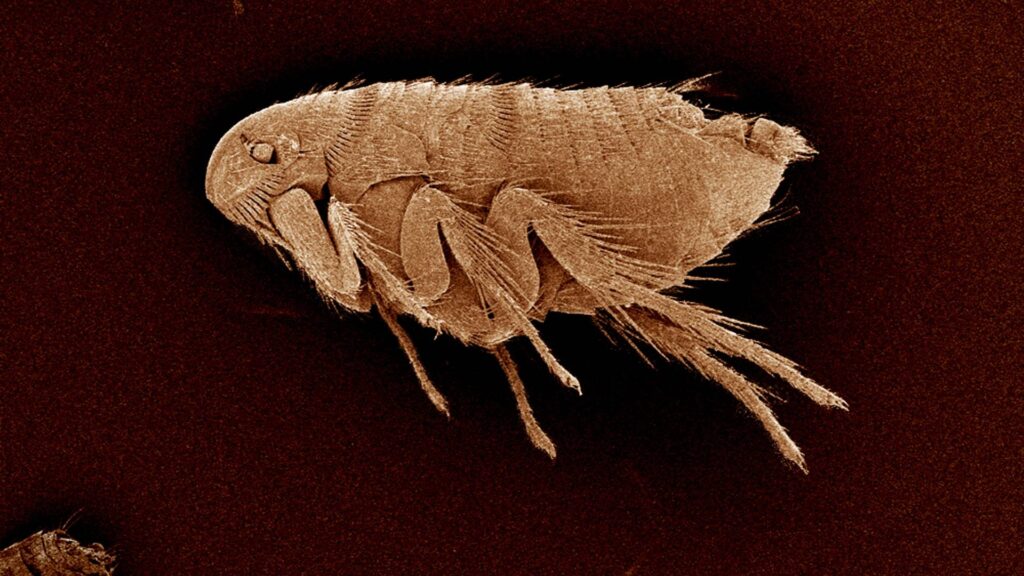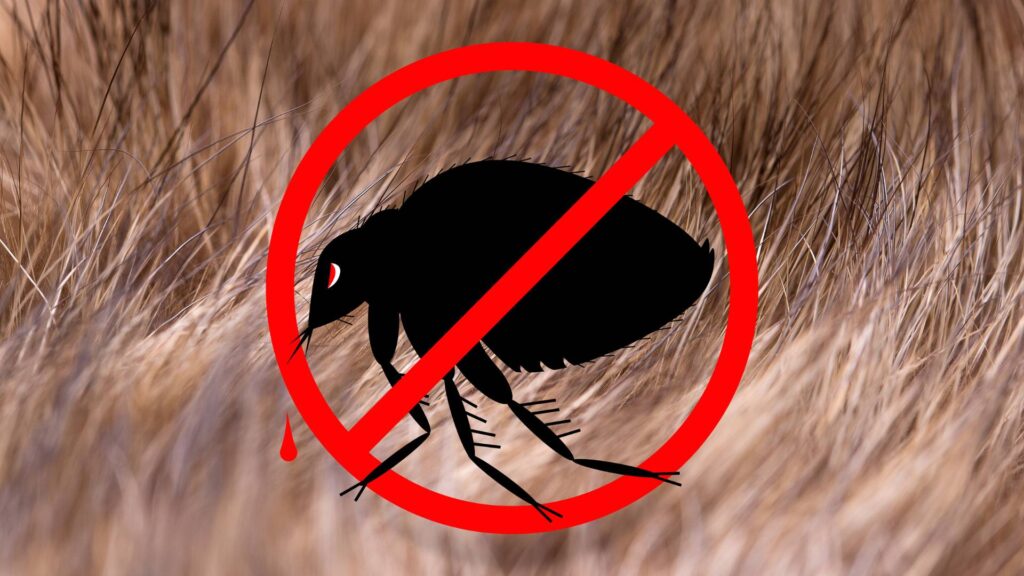Table Of Content
ToggleAs a pest control expert with years of experience, I’ve seen firsthand the distress that flea infestations can cause in homes.
Fleas are not only a nuisance but can also pose health risks to humans and pets alike. This comprehensive guide is designed to arm you with knowledge and effective strategies to tackle flea problems head-on, ensuring a clean and safe environment for your family and pets.
What Makes it an Infestation?
A single flea doesn’t necessarily mean an infestation. However, if you notice frequent bites, especially on your ankles and legs, or see tiny black specks (flea dirt) on your pet or bedclothes, you likely have unwelcome guests.
Identifying the Enemy: The Flea Life Cycle
Fleas have a four-stage growth cycle: egg, larva, pupa, and adult. Eggs are laid on pets and can fall off onto carpets, furniture, and bedclothes. These hatch into larvae, which feed on organic debris and flea dirt. After pupating in cocoons, they emerge as adult fleas, ready to jump on your furry friend (or you!) for a blood meal and continue the cycle.
This growth cycle is crucial to understand, as effective flea removal requires breaking it at multiple stages.
Explore your pest control options for a safer home today.

Now that we know the enemy, let’s battle! Here are some effective methods to eliminate fleas quickly:
Choose the best pest control frequency. Get expert guidance.
Ready to fumigate your home? Contact us today for a customized quote!

Our furry companions often bring fleas indoors. Regular checks for fleas and prompt flea treatments are crucial.
Don’t let pests take over your space. Get in touch now and reclaim your home!

Need expert fumigation services? Click here to schedule an appointment.
Fleas, with their keen sense of smell, find certain natural scents highly unpleasant. Let’s explore these scents and how to utilize them to create a flea-repellent haven in your home:
These essential oils are superstars in the flea-repellent world. They contain compounds like cedrol (cedarwood), camphor (rosemary), and menthol (peppermint) that disrupt the fleas’ nervous systems, acting as a natural deterrent.
How to Apply (with Caution):
While effective, essential oils can be irritating to pets. Always consult your veterinarian before using essential oils around your pets.
For pet-free areas: Here’s a DIY flea repellent spray recipe using these oils:
Commercially Available Options: If DIY isn’t your cup of tea, there are various commercially available flea repellent sprays made with natural ingredients like cedarwood or citrus oils. Look for reputable brands and follow the product instructions carefully.
Say goodbye to pests for good. Book your fumigation session now!
Lemongrass oil offers a refreshing and effective way to remove fleas. Its citrusy scent, containing citronella, disrupts their senses and keeps them at bay.
How to Apply (with Caution):
Similar to the powerhouse trio above, lemongrass oil can irritate pets. Always consult your veterinarian before using it around your furry companions.
For pet-free areas: You can incorporate lemongrass oil into your DIY flea repellent spray (see recipe in the “Powerhouse Repellents” section) or use commercially available sprays containing lemongrass oil as a natural flea repellent.
By incorporating these natural flea repellents into your flea control routine, you can create a less inviting environment for those pesky fleas and make your home a more comfortable space for yourself and your furry companions. Remember, when using essential oils, prioritize pet safety and consult your vet for pet-safe alternatives.
Looking for a pest-free home? Reach out to our experts today!

Remember: Treating both your home and yard is crucial for complete flea control.

With years of experience in pest control, I’ve learned that the key to maintaining a flea-free home is consistent prevention and timely action. Implementing the strategies outlined in this guide can significantly reduce the likelihood of flea infestations.
Regular cleaning, vigilant pet care, and the strategic use of flea repellents and treatments can create an inhospitable environment for fleas, safeguarding the health and comfort of your household.
Remember, managing pests is a continuous process that requires attention to detail and dedication to maintaining a clean and healthy home environment.
To break a flea cycle in your house, focus on thorough cleaning and treatment methods. Regular vacuuming, washing bedding and textiles at high temperatures, and using targeted flea treatments like sprays or foggers can disrupt all stages of the flea growth cycle.
Products that kill all four stages of fleas include insect growth regulators (IGRs) and insecticides that target eggs, larvae, pupae, and adult fleas. These can be found in the form of sprays, foggers, and spot-on treatments for pets.
Secure your home with the right pest control plan. Find out how.
A flea infestation will not go away on its own without intervention. Effective management requires consistent and comprehensive measures to target the entire life cycle of fleas, including physical removal and chemical treatments.
Your trusted pest control experts in Southern California. Keeping your neighborhood pest-free!